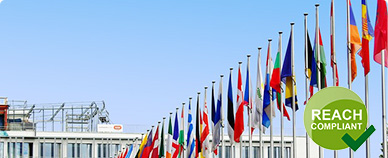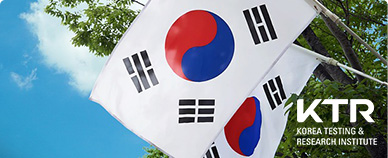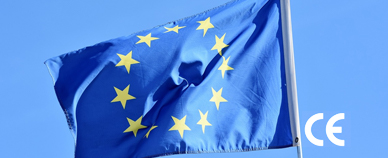Carbon neutral solutions
Project overview
Carbon neutral, also called “ Net zero emissions ” It refers to the carbon emissions necessary for human economic and social activities, which are captured, utilized or stored through forest carbon sinks and other artificial technologies or engineering means, so that the net increment of greenhouse gases emitted into the atmosphere is zero. Greenhouse gas emissions by “ Carbon dioxide emissions equivalent ” Is calculated in units, so it is also often called “ Carbon emissions ” .
Carbon peaking refers to a steady decline in carbon emissions after reaching a historical maximum in a given year, or entering “ Plateau” (that is, carbon emissions fluctuate within a certain range and peak) and then decline steadily.
How to be carbon neutral
As an enterprise, it can be achieved through the following four measures:
1, a comprehensive accounting of greenhouse gas emissions, including scope 1, 2, 3 emissions. Develop and implement long-term climate policies;
2. Comprehensively increase the use of renewable energy by means of green power trading and purchase of green certificates;
3. Improve energy efficiency by investing in new technologies and adopting energy management systems;
4. Promote supply chain enterprises to disclose carbon emission data, set carbon reduction targets and implement carbon neutrality actions.
Applicable industry
1. In the National Measures for the Administration of Carbon Emission Trading (Trial), organizations whose annual greenhouse gas emissions reach 26,000 tons of carbon dioxide equivalent are classified as national high-emission enterprises.
Each province defines the emissions of high-emission enterprises at the provincial and municipal levels as 3000-5000 tons of carbon dioxide equivalent.
In addition to high-emission enterprises, the greenhouse gas emissions of electricity, non-ferrous metals, energy, cement, paper, textile, equipment manufacturing, building materials, chemical industry, aviation, integrated circuits, food, steel, ceramics, aquaculture and other industries are relatively high, and are also suitable for carbon neutrality until zero carbon.
China Carbon Neutral Solution
For the five levels of enterprise carbon neutrality, Zhongbang can also provide a full set of service content to meet the practical requirements of enterprises at different levels of carbon neutrality.
1, primary: carbon emission accounting
– Carbon inventory (greenhouse gas emission verification and inventory service based on national standards)
– ISO 14064 Greenhouse Gas Emission Verification
2, intermediate: carbon emissions comprehensive accounting and data disclosure
– Comprehensive accounting of carbon emissions based on GHG Protocol series standards (including Scope 3)
– CDP Disclosure Rating Advisory Service (Chinese and English report writing)
– LCA Life Cycle Assessment of carbon Emissions. ESG Report consulting and writing (Chinese and English)
– GRI and ISAE 3000 compliant data disclosure documentation (for specific disclosure items)
– Carbon credit assets procurement and management recommendations
3, advanced: Scientific emission reduction target setting and implementation
– Develop implementation plans and assess feasibility of carbon reduction targets in line with SBTi requirements
– ISO50001 Energy Management System
– Scope 1, Scope 2 emissions accounting and emission reduction target model setting
– Scope 3 Carbon Footprint Measurement and target setting
– Submit targets to the Science-based Carbon Target Initiative
– Other Net Zero emission targets proposed
– Evaluation and consultation on energy efficiency Improvement and Energy Transition

The services we provide
The Green, Low Carbon and Energy Efficiency Service team is a professional and experienced team that can provide professional and practical services for carbon neutral actions, helping enterprises to capture, use or store through forest carbon sequestration and other artificial technology or engineering means, while reducing the net increase of greenhouse gases emitted to the atmosphere.
- • Life cycle assessment: Product Carbon Footprint (PCF), Product Environmental Footprint (PEF)
- • Product Low-carbon Certification: Environmental Product Declaration (EPD certification)
- • Recycled materials certification: ISCC Plus certification, GRS certification, RCS certification,
- • Supply chain sustainable information disclosure: organizational carbon inventory, CBAM data filling, CDP climate questionnaire filling, EcoVadis certification, SBTi certification, ESG report preparation
- • Registration system construction and physical examination pre-examination consulting service
Zhongbang is one of the earliest institutions in China to engage in compliance consulting services. It has a senior expert team composed of PhDs, Masters, and Bachelor's degrees, and has established branches in the UK, the United States, South Korea, Beijing, Shanghai, Suzhou, Fuzhou, Shenzhen, and other places, forming a global service network layout.
-
Strong technical strength:
A strong team composed of mid to senior technical personnel with professional backgrounds in chemistry, food nutrition and health, medicine, biology, toxicology, environment, and other fields
-
International service level:
A business elite team with multiple languages including English, Japanese, German, and Chinese, efficiently serving international customers
-
Rich compliance experience:
With years of experience in global product and regulatory research in multiple fields, we are able to provide comprehensive and high-level compliance consulting support to various customers
-
Localized service capabilities:
Having multiple branch offices in the UK, USA, South Korea, Beijing, Shanghai, Suzhou, Fuzhou, Shenzhen, etc., we can provide you with services nearby
Service Hotline :400-115-9001
Zhongbang Consulting (Shandong Zhongbang North Management Consulting Co., Ltd.) focuses on product registration and compliance consulting services. With its professional technology, diverse resources, and global network, we are committed to providing regulatory consulting and environmental regulation response services for pharmaceutical, chemical, consumer goods production enterprises, and large multinational corporations. To solve the environmental, health and safety laws and regulations, product quality standards, and other issues faced by enterprises in production, sales, and global trade processes.
Accumulated Customers
18,000+
Distributed in 35 countries and regions
14year
Industry experience
260+
Senior expert team
15+
Subsidiaries
300+
Collaboration Cases
Brand Cases
The choices and trust of over 18000 customers are the driving force for Zhongbang to continuously improve its services. We are willing to grow together with these excellent enterprises
Service Hotline:400-115-9001






































































 Consultation
Consultation
 400-115-9001
400-115-9001